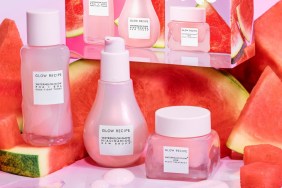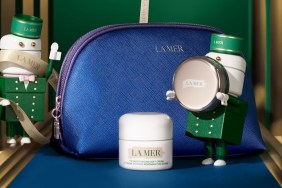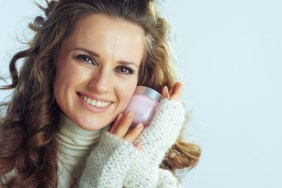
An alkaline diet includes avocado. Image: Getty
tFS: How can a person determine if their skincare product is pH optimized?
MVA: When skin has the proper pH balance, it is not too dry or too oily, it can better absorb antioxidants and other anti-aging ingredients, and it can ward off acne and wrinkles. The reason for this is that when skin is at its naturally acidic pH, the acid mantle remains intact. But it’s really easy to disrupt the acid mantle with seemingly innocuous behavior; washing with water that’s hot or too cold (lukewarm is best), using cleansing brushes or over-exfoliating and using cleansers with harsh detergents or foaming agents, like sodium lauryl sulfate.
Only a chemist in a lab can tell you if a product is properly pH optimized, or the brand can reassure you of that on the label. If your skin is red, dry or inflamed, it could be related to the products you’re using. It could also be related to other exogenous factors like dehydration, stress, lack of sleep, lack of exercise, alcohol and caffeine consumption, eating too many acidic foods, etc.
tFS: What pH should skincare products have or does it depend on which type of skincare product it is?
MVA: Depends on what it is being used for, the ingredients involved and how it is packaged. For example, it’s best to use a cleanser that is mildly acidic, a pH of 3 to 5.5, to exfoliate skin cells, whereas for an eye cream because of the delicate skin around the eye, you want to use a higher pH product. As for ingredients, vitamin C, for example, is a very unstable molecule, it only works at a pH of 3.0 or lower. So, an ingredient with active vitamin C must be stabilized at a very low pH. Finally, when formulas are exposed to UV light and oxygen, they are rendered inactive. If the formula is not preserved in an airless container, it’s at risk for bacterial contamination, not to mention losing its potency.
tFS: How does diet come into play in leading a pH-balanced life?
MVA: Things like poor diet, too much alcohol and too little exercise all contribute to our internal and external pH. You can find out your internal pH by testing your saliva with a multicolored pH strip first thing in the morning. The best way to test the pH of your skin is by looking in the mirror. Healthy, radiant skin with the proper pH has an even color and tone, has very little to no redness and no dry patches or flakes.
tFS: Can you talk to us about which foods you recommend and which you suggest avoiding?
MVA: An alkaline diet relies heavily on antioxidant-rich foods like leafy green vegetables (kale and spinach are excellent as well as avocado, broccoli, asparagus and bell peppers), low-sugar fruits (like apples, lemons, bananas, berries, pomegranate and watermelon), nuts (walnuts, almonds and chestnuts are best), grains (quinoa, steel cut oatmeal, amaranth) and seeds (such as chia, flax, pumpkin and sunflower). Avoid acid-forming categories like sugar, dairy, red meat, processed grains, yeast, alcohol and caffeine.
Alkaline-forming foods are naturally high in the exact vitamins and minerals needed for good skin — antioxidants such as beta-carotene and vitamins A, C and E, omega-3 fatty acids and zinc. They lead to a stronger immune system, improved digestion and better skin tone. We follow the 80 percent alkaline/20 percent acidic principle while eating because everybody needs a chocolate chip cookie once in a while.
tFS: What other things may affect your body’s optimal pH level?
MVA: Stress, lifestyle, smoking, consuming alcohol, lack of exercise, too much sun exposure, not drinking enough water, too much caffeine, lack of sleep and poor skincare.
The best way to achieve proper skin pH is by sticking with a cleanser that uses chemical exfoliants, such as alpha-, beta- or polyhydroxy acids. They can more evenly and safely remove dead skin cells than physical exfoliants like beads, washcloths and scrubs. Doing this sets up your skin to receive all of the ingredients it needs from a serum and moisturizer; antioxidants to protect against UV damage and environmental stress, peptides and amino acids to firm skin cells and encourage new collagen formation, and vitamins and minerals to replenish the skin. It’s best to avoid toner, as many contain alcohol, which can be drying to the skin. Many serums and moisturizers are formulated with an alkaline pH, so it’s important to avoid ingredients like propylene glycol, diethanolamine (DEA), triethanolamine (TEA) and monoethanolamine (MEA).







